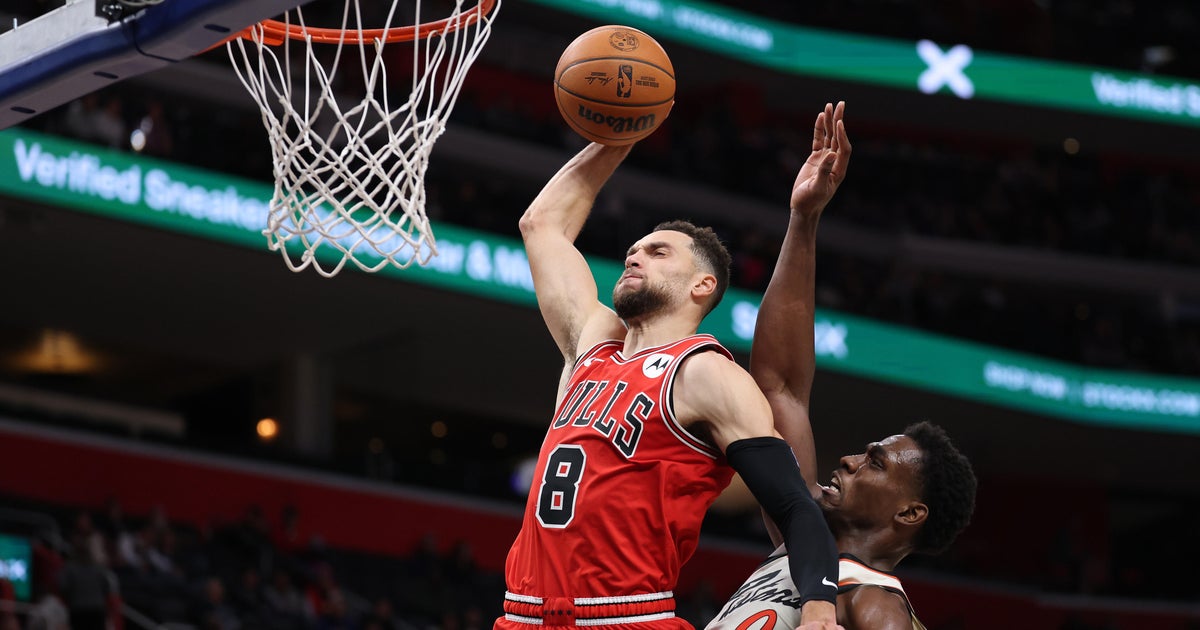Wisch: 5 Things You Might Not Know About The Chicago Marathon
By Dave Wischnowsky –
(CBS) I've never run the thing myself – who knows, maybe some day – but the Chicago Marathon and my family still go way back.
Between 1978 and 1991, my dad – who ran a total of 17 marathons in total during his long-distance heyday – completed the 26.2-mile course that each autumn winds its way up and down Chicago's streets and through 29 of its eclectic neighborhoods.
Back in '78 when my dad ran his first Chicago Marathon during the event's second year, there were only 5,200 entrants. When he ran his last one in '91, there were still only 7,500. This year, there are 45,000 runners – and they hail from 115 countries.
"Things have really changed," my dad said this morning.
Yes, they certainly have. And to enlighten you a bit more about the Windy City's trademark long-distance race, here are five things that you might not know about the Chicago Marathon.
1. The very first Chicago Marathon was actually in 1905
The "modern-day" Chicago Marathon celebrates its 25th anniversary this year, but the race actually has an ancestor so old that when it first plotted its path through the city, the Cubs were still three years shy of their last World Series victory.
So, you know, a long time ago.
On Sept. 23, 1905, the first Chicago Marathon organized by the Illinois Athletic Club started off in north suburban Evanston and finished in Washington Park on Chicago's South Side. More than 100,000 spectators reportedly watched as upstart Rhud Metzer came from behind to steal a late-race victory from favorite Louis Marks.
The crowd might have been big for that the original marathon – which continued annually in Chicago until the early 1920s – but the field was not. Only 20 runners registered for the race, just 15 of them showed up at the starting line and a mere seven made it to the finish.
2. The first "modern" Chicago Marathon almost didn't happen
In November 1976, a group of five Chicagoans met at the Metropolitan YMCA on LaSalle Street to discuss resurrecting the city's marathon after more than 50 years.
However, Chicago Parks Superintendent Ed Kelly more or less told them: "Over my dead body."
Kelly apparently didn't want packs of runners trampling their way through any of his precious parks or along the Lake Michigan lakefront, so marathon organizers sought out the backing of Richard J. Daley, who liked the idea. Daley, however, died on Dec. 20, 1976.
But the mayor's successor Michael Bilandic was an avid runner and supported the marathon, finally convincing Kelly to also get on board. On Sept. 25, 1977, the first edition of the modern Chicago Marathon was held with Bilandic and his wife passing out the medals to the winners.
3. It was originally known as The Mayor Daley Marathon.
Chicago's legendary – and portly – Mayor Richard J. Daley would never strike anyone as a marathoner. And he wasn't.
But, before he unexpectedly died of a heart attack, Daley – who had attracted the 1959 Pan-American Games to Chicago – was in favor of hosting a marathon in his city.
In July 1977, race organizer Lee Flaherty – whose company Flair Communications became the official sponsor of the first Chicago Marathon – had a lunch meeting at the Drake Hotel with William Daley, son of the late mayor. After the meal, they got the blessing to name the race the Mayor Daley Marathon.
In 1979, Beatrice Foods became the race's first corporate sponsor, and was followed by the Heileman Brewing Company, which changed the race's name in 1988 to the Old Style Chicago Marathon.
In 1992, the race went sponsorless until La Salle Bank picked up the mantle and named it the La Salle Bank Marathon in 1994. Since 2008, the race has been known as the Bank of America Chicago Marathon.
4. A marathon tour of Chicago sports
The Chicago Marathon's course doesn't just take runners on a tour of the city's neighborhoods, it takes them on one of the city's sports venues, as well.
Laid out in a loop, with its starting and ending point in Grant Park, Chicago's course can generally be divided into three sections: North, West and South. Near the turning points of each region are Wrigley Field to the north, the United Center to the West and U.S. Cellular Field to the south.
The race doesn't end at Soldier Field, but when runners are struggling up the "hill" on Roosevelt Road in the final stretch, they can easily see the home of the Chicago Bears from there.
5. We're the City of Broken Records
In the 25 years since Chicago's modern race was founded, world records have been broken four times.
In 1984, Steve Jones of Great Britain broke the world record with 2:08:05. In 1999, Moroccan-born Khalid Khannouchi was the first to surpass 2:06:00 with a final time of 2:05:42 – shattering Ronaldo da Costa's old World Record by 23 seconds in the process.
The women's record, meanwhile, was broken in two consecutive years. In 2001, Kenyan Catherine Ndereba broke the record in 2:18:47, and Paula Radcliffe of England surpassed that mark with 2:17:18 the year after.
Radcliffe's world record is also the course record; while the men's record is 2:05:37, set in the 2011 race by Moses Mosop of Kenya.
If nothing else, Dave Wischnowsky is an Illinois boy. Raised in Bourbonnais, educated at the University of Illinois and bred on sports in the Land of Lincoln, he now resides on Chicago's North Side, just blocks from Wrigley Field. Formerly a reporter and blogger for the Chicago Tribune, Dave currently writes a syndicated column, The Wisch List, which you can check out via his blog at http://www.wischlist.com. Follow him on Twitter @wischlist and read more of his CBS Chicago blog entries here.



